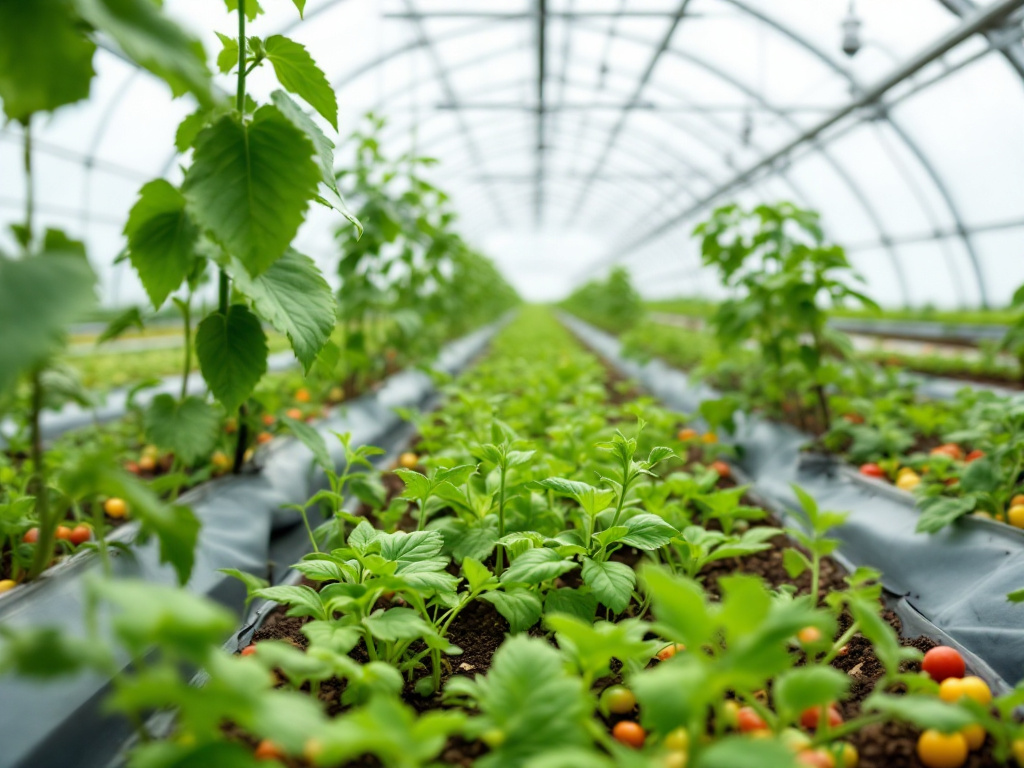Image generated by flux-ai.io & content generated by ChatGPT Version 4o-mini
Growing Green: What Taylor County Residents Should Know About Greenhouse Vegetable Production
In recent years, greenhouse vegetable production has been gaining traction across Florida, and Taylor County could stand to benefit from this agricultural trend. A recent report from experts at the University of Florida highlights important insights and considerations for anyone looking to dive into this farming method, which could enhance local economies and food availability.
What Is Greenhouse Vegetable Production?
Greenhouse vegetable production involves growing plants in controlled environments, which can help protect them from pests and unfavorable weather. This method allows farmers to produce crops like tomatoes and cucumbers year-round, regardless of the season outside. Think of it as creating a mini-Florida summer inside a building, where plants can thrive without the stress of cold winters or heavy rains.
Why Is This Important for Taylor County?
With Taylor County’s economy heavily tied to agriculture, particularly livestock, diversifying into greenhouse vegetables could provide new income opportunities for local farmers. The report emphasizes that greenhouse crops can yield higher profits per acre compared to traditional field crops. For example, if you’re a local beef cattle farmer, adding a greenhouse to your operations might allow you to produce fresh vegetables for local markets, which could be a great way to supplement your income.
The Benefits of Greenhouse Production
-
Higher Returns: Greenhouse vegetables often command higher prices in the market. This is due to their quality and the fact that they can be grown out of season, providing a steady supply when field-grown vegetables are not available.
-
Job Creation: Establishing greenhouse operations can create jobs in the community, from construction to ongoing farm management. This is particularly important given Taylor County’s unemployment rate of 3.4%, which, while relatively low, could benefit from more local employment opportunities.
-
Fresh Produce Access: Growing more vegetables locally means fresher produce for Taylor County residents. This can improve community health and reduce reliance on imported goods, which is increasingly important as food supply chains become more strained.
Challenges to Consider
However, getting into greenhouse vegetable production isn’t just a walk in the park. The report outlines several challenges that prospective growers need to be aware of:
-
Higher Initial Costs: Setting up a greenhouse can be expensive. From construction to heating and irrigation systems, the upfront investment can be significant. Farmers must carefully assess their financial situations to ensure they can afford this.
-
Market Volatility: The market for specialty crops can fluctuate. Depending on consumer trends, what’s popular today might not be in demand tomorrow. Local growers will need to stay informed about market trends and consumer preferences to succeed.
-
Intensive Management Requirements: Greenhouse vegetables require careful monitoring and management. This includes pest control, temperature regulation, and nutrient management. For farmers who are used to outdoor farming, this can be a big adjustment.
Moving Forward
For Taylor County residents interested in greenhouse vegetable production, the University of Florida’s resources can provide guidance on best practices and considerations. Local agricultural extension services can also offer support, helping farmers navigate the challenges and opportunities.
In conclusion, while greenhouse vegetable production offers exciting possibilities for enhancing Taylor County’s agricultural landscape, it’s essential to weigh the benefits against the challenges. With careful planning and dedication, local farmers might just find a new way to grow not only their crops but also their communities. If you’re interested in learning more, reach out to the local UF/IFAS office or check out their website for resources tailored to our area. The future of farming could be greener than ever!
References
HS766/CV244: Introduction—Florida Greenhouse Vegetable Production Handbook, Vol 1. (n.d.). Ask IFAS – Powered by EDIS. https://edis.ifas.ufl.edu/publication/CV244

